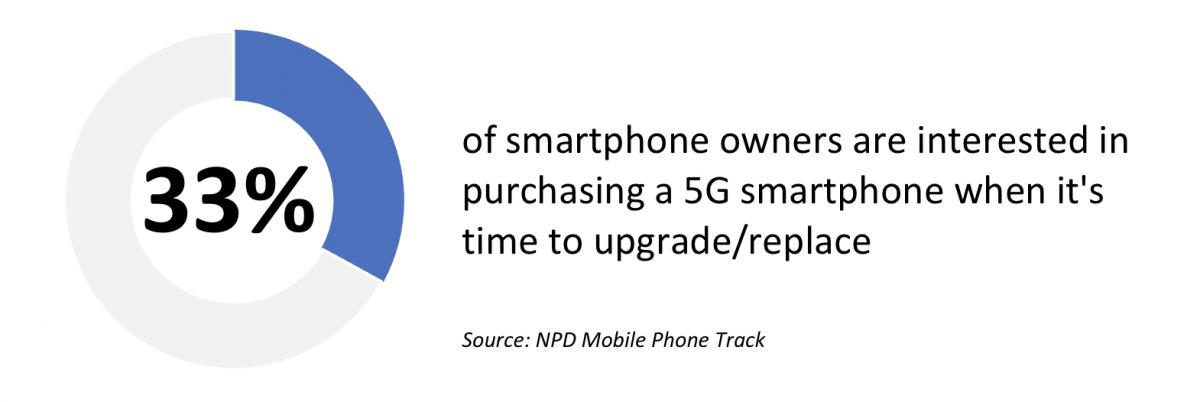
Coronavirus hits tech supply chains
Apple last week announced that it will miss its revenue target for the existing quarter due to the Coronavirus, which has adversely impacted the iPhone demand in China, one of Apple's main iPhone growth engines. The company said that the virus has also restricted its iPhone production, meaning the supply will not be available to match the high iPhone demand in other global markets. And earlier today, Samsung has announced the temporary shut down of a phone manufacturing facility in South Korea (which allegedly produces the new Galaxy Z Flip) due to coronavirus.
The NPD Take:
- When the MWC 2020 show was canceled due to the coronavirus outbreak two weeks ago, the main sentiment in the mobile community was a disappointment with GSMA for being too cautious. But it turns out that that was just the beginning. Considering the complexity of the supply chain management of smartphones that require hundreds of components (which are mainly procured from mainland China), Apple and Samsung will not be the only OEMs to feel the heat.
- We have been seeing a slow down in smartphone sales in parallel to the increase in device upgrade cycles. Sales were expected to grow in 2020 with 5G becoming an integral part of high- and mid-tier products, but the outlook may not be as promising if the supply chains do not recuperate fast in China.
T-Mobile and Sprint merger goes full steam ahead
Last week we reported on the news of a US federal judge ruling in favor of T-Mobile and Sprint in an antitrust case aiming to block the merger for market competitiveness purposes and noted that there were alleged discussions about the T-Mobile parent Deutsche Telekom pressuring Sprint’s parent Softbank to renegotiate the terms of the agreement citing the decline in value of the Sprint stock since the proposal of the final deal in 2018. Within a week, T-Mobile has announced that the two-parent companies have signed off an amended agreement that grants Deutsche Telekom extra ownership in the deal. According to the new amendment, Deutsche Telekom will own 43% of the new T-Mobile organization (compared to 42% in the initial deal), while Softbank’s share will shrink to 24% (from 27%). The remaining shares (33%) will be publicly traded.
The NPD Take:
- T-Mobile’s leadership will go through a major rehaul as the current CEO John Legere will step down at the end of April and be replaced by the existing COO Mike Sievert. The aim is to start the new organization (the new T-Mobile) as early as April 1, 2020, thus securing this new ownership amendment within only a week after the judge’s decision is crucially important in meeting the merger closure timeline.
- Softbank agreeing to take a three percentage point share hit on the ownership of the new organization may not be ideal, but Sprint’s spiraling business performance that pushed churn and company debt up since the initial agreement justifies the new amendment.
Qualcomm debuts new 5G RF Modem
Qualcomm last week announced the upcoming availability of its new 5G modem platform that will allow smartphones to enjoy up to 7.5 Gbps of downlink speeds (on mmWave networks). The new X60 platform, like the existing X55 modem present on the 2020 flagships such as the Samsung Galaxy S20, aggregates the high(mmWave) and sub-6 bands, giving carriers the ability to offer a robust 5G service with good coverage and fast speeds. The platform also includes a new antenna module allowing for more compact smartphone designs compared to the initial form factors available in the market.
The NPD Take:
- Qualcomm’s latest-generation chipsets typically have lower power consumption compared to predecessor chipsets and the new X60 platform continues this trend. The low power consumption aspect is crucial considering that most of the first generation 5G smartphones are bulky due to their large batteries to offset the power consumption limitations of the initial chipsets.
- The X60’s new antenna module will have a more compact design compared to the previous iterations. High-band 5G signals do not penetrate through the human body, thus the first generation 5G smartphone designs required additional real estate to house extra antennas to counterbalance this limitation. The new antenna module will allow OEMs to create more compact and innovative (more foldables??) designs for their 2021 lineups.


